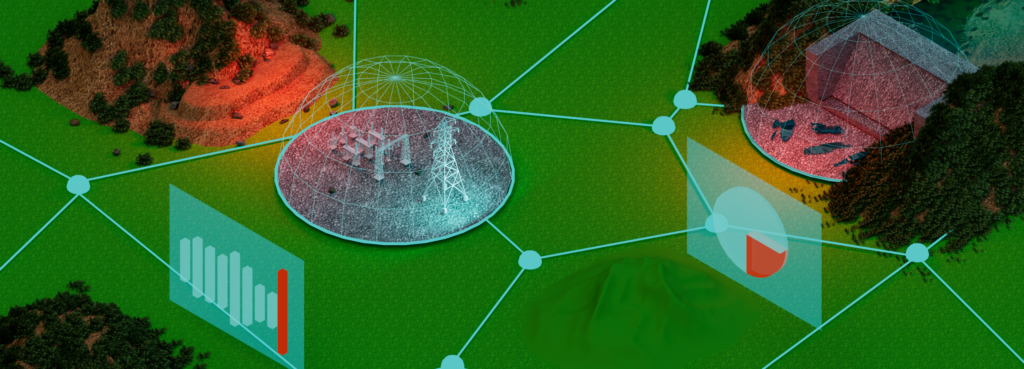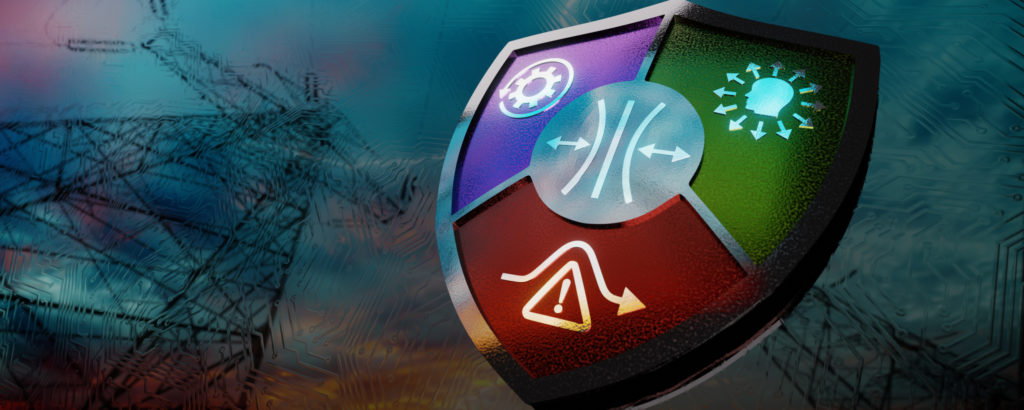The World Bank and EPRI partner with XM in Colombia to re-imagine resilience
Like many other power sector organizations around the globe, XM, the transmission system and market operator in Colombia, has been spending an increasing amount of time thinking about resilience.
It’s hardly surprising that XM would view resilience as a pressing concern. Indeed, real-world events and trends have focused the attention of utilities, system operators like XM, policymakers, and regulators on the importance of resilience of the electricity system. In the U.S., for example, a recent EPRI analysis found that achieving net zero carbon emissions by 2050 could result in electricity’s share of end-use energy consumption rising from 20% today to between 40 and 60%.
As electricity is more heavily relied on to power everything from transportation to buildings to heavy industry, extreme weather is also challenging those whose job it is to keep the grid up and running. According to the National Oceanic and Atmospheric Administration (NOAA), 2021 saw 20 weather and climate events that caused over $1 billion in damages, including the extreme cold in Texas that led to extended power outages, as well as one of the now-routine long, harsh wildfire seasons across the western U.S.
No Common Approach to Resilience
But as much as circumstances compel electricity sector stakeholders to examine ways to improve resilience, no single approach will work for all geographies, markets, or power system configurations. Furthermore, decisions about the right policies and investments to improve resilience also have to take into consideration the risks represented by a range of threats, which include storms but also equipment failure, cyber attacks, and global pandemics.
“There are specific challenges to a power system in terms of the types of events that can occur, and that really depends on the utility,” said Bob Entriken, a technical executive at EPRI. “The question is not just what kinds of events are important to consider for my location; it’s also how much risk is acceptable. But if I ask that question, I assume I know the risk and can make a choice. But the answer is often that you don’t actually know what the risk is.”
In 2020 XM was in discussions with the World Bank about potential projects they could collaborate on to help improve the planning and operation of the system. The two organizations had already worked together on research about effectively integrating renewables, and XM was just beginning to grapple with resilience. “Resilience was a new topic for us in Colombia,” said Carlos Mario Correa Posada, a specialist on planning operations at XM. “Back then, we had a view of resilience and thought it only applied to power system planning and operations regarding climate events.”
In fact, XM already performed grid simulations that could easily fall under the definition of resilience. For example, the system operator analyzed what would happen in the event of an extreme dry season—which could have a big impact because Colombia’s grid relies on hydropower—or a terrorist attack leading to a dam closure. “There are some special events that we have studied before that can be categorized under resilience, but we were doing it more like special studies,” Correa said. “We were not using a methodology, and we tried to adapt reliability tools and metrics to those particular studies. We wanted a state-of-the-art revision of our approach to resilience.”
A Model for Transmission System Resilience
In response, EPRI, XM, and the World Bank teamed up to develop tools and approaches to both define and begin institutionalizing the system operator’s approach to resilience. Because XM plays such a central role in the nation’s power system, its efforts have a large influence on how utilities, government policymakers, regulators, and other energy sector stakeholders in Colombia approach resilience.
For XM, a key initial step was to determine the difference between reliability and resilience. Also important was to understand how to assess and monitor resilience, identify gaps in its understanding, and establish a resilience roadmap to guide its future activities.
At the start of the project, EPRI searched for any existing models or methodologies that would help guide a comprehensive approach to resilience. “It turns out that for their purposes, there was not much out there,” Entriken said. But not long after the project began, EPRI worked with the North American Transmission Forum, the U.S. Department of Energy, and the Pacific Northwest National Laboratory to release the Transmission Resilience Maturity Model (TRMM), which exactly suited XM’s needs.
At a high level, the TRMM provided XM a defined methodology to consider and evaluate the many interrelated factors and challenges that go into resilience using a single model. Importantly, it also helped XM to prioritize and coordinate the entire organization’s resilience activities. “The idea of the maturity model is to start to be aware that resilience involves all these 20 things and then to begin working on it in the sense of finding the right people and starting to manage it,” Entriken said. “And as you manage it, you get to the point where it’s institutionalized instead of depending on a local expert who might leave his job or retire. It becomes documented and revised on a regular basis to become part of the organization and how it works.”
To be more specific, the TRMM includes nine distinct domains, including everything from event response and recovery to resilience program management to supply chain and data exchange between organizations involved with resilience, such as first responders. Early in the project, EPRI and XM prioritized three of the TRMM domains according to XM’s roles:
- Situational awareness. It is impossible to prepare for an event you haven’t anticipated. Situational awareness is ultimately about being clear-eyed about vulnerabilities. “You need to be aware of the kinds of extreme events and phenomena that fit your geography,” Entriken said. “You need to gauge how extreme they can be, and then you need to assess the impact they can have. XM pulled together an internal team to identify all the vulnerabilities in their system, not just extreme weather but cyber security and transmission and markets.”
- Risk identification, assessment, and management. Situational awareness connects directly to risk management. With an ability to identify even high-impact, low-frequency events (such as a global pandemic), it’s possible to estimate and quantify the possible effects on resilience and formulate steps to follow to address the risks.
- Event response and recovery. The utility industry has plenty of experience responding to power outages. But the nature of power system resilience today and into the future requires collaboration with a wide range of stakeholders outside the industry, including first responders and local business and government leaders. The TRMM provided XM with a way to identify resilience gaps and develop a roadmap for closing those gaps.
A Case Study to Test the Model
Understanding that there was a methodology to guide XM’s resilience planning and preparation was an important conceptual step. But XM also wanted to test the methodology using a simulated event on the Colombian power grid model.
To do that, XM chose to simulate a landslide near a critical substation. The simulation allowed XM to analyze the likely effect of the landslide on equipment and the potential for it to result in cascading outages. The process of selecting the event to simulate was helpful in itself because it involved drawing in groups across XM to provide data and to collaborate about the possible impacts of the landslide on operations and markets.
“We established some templates in which people from different areas can answer some questions,” said John Alexander Cardozo Duarte, an energy analyst at XM. “One challenge is how to go from the event to the power system impact and how to translate the same approach to an earthquake or a hurricane or some other event. But the case study was a way to test the methodology and be sure the tool was working properly.”
One of the main benefits of the work required to complete the case study—and of the project overall—was to establish a common language and understanding of resilience. It also helped XM begin to establish metrics to track resilience efforts across the company. “The TRMM gives us a common perspective and a common metric to measure how the actions we take in our operations and in our daily work can help or hurt the resilience of the system,” Correa said. “Now, it doesn’t matter if you work in market operations or in the power system operations planning program, we can all measure our actions with specific questions. That is not something we even imagined before.”
Outreach to Share Lessons About Resilience
The message that resilience requires organizational collaboration has been shared throughout XM. After the project was completed, XM analysts and engineers were invited to participate in a workshop to learn more about the TRMM and to collaborate on developing a common resilience framework. Correa and Entriken presented their findings to XM’s CEO and board of directors, who have subsequently shared the results in their own discussions with external stakeholders.
Because resilience also requires collaboration with organizations outside of XM, the company has conducted outreach with industry and government officials. For example, Correa and Entriken delivered a presentation to Colombia’s Ministry of Energy and regulatory board. “That was important because the ministry is working on a new power system resilience policy, and the regulator must start working on new regulations regarding resilience,” Cardozo said. “The idea was to give them the holistic perspective when developing policy and regulations, and now they see us as a source of information and support as they work on policy and a regulatory framework.”
Since the project was completed, XM has also launched a series of initiatives to continue making progress on resilience. One is the development of a roadmap to fill gaps identified during the project. In the realm of planning, for instance, XM is pursuing a more in-depth case study using the TRMM and the tools developed as part of the project. In operations, the company plans on holding restoration drills with transmission companies across the country and will work on improving its situational awareness. XM also plans to perform a TRMM evaluation of its markets to identify both gaps and a roadmap to address those gaps.
XM’s approach to resilience will undoubtedly evolve. But for Correa, the two-year project with EPRI has provided an important framework and methodology that can be adapted and improved as vulnerabilities and solutions change. “With this project, we started at the beginning to identify what we had and what we didn’t,” Correa said. “The process we are now following in Colombia about resilience is the right one. It’s a long road, but we are headed in the right direction.”
The Industry at Work
It’s not just individual companies like XM focusing on this challenge. Last month, EPRI launched a three-year effort called Climate READi: Power (REsilience and ADaptation initiative), convening global thought leaders and industry stakeholders to develop a common framework to address this resilience challenge. The Climate READi framework embodies one of the most comprehensive, integrated approaches to physical climate risk assessment.
The Climate READi framework enables global energy companies, climate scientists, regulators, and other stakeholders to use these insights and assessments to address future power system challenges from extreme weather. At the same time, they continue the transition towards an affordable and reliable net-zero future.
EPRI Technical Expert:
EPRI Technical Expert:
Robert Entriken
Artwork by Edge Design and David Foster Graphics



